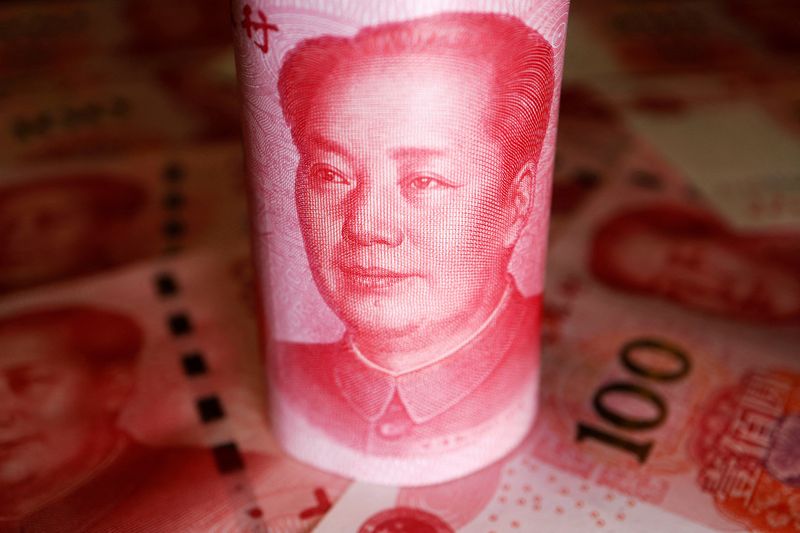(Reuters) -China’s central bank will cut banks’ reserve requirement ratio by 50 basis points and further reduce key interest rates to support a recovery in prices, its governor Pan Gongsheng said on Tuesday.
Pan, speaking at a news conference alongside officials from two other financial regulatory agencies, said the seven-day repo rate will be cut by 0.2 percentage points to 1.5% and said deposit and other interest rates will fall as well.
Market reaction:
Chinese stocks rose broadly and bonds rallied following the announcement, with the CSI300 blue-chip index and each gaining about 1%. The 30-year treasury futures for December delivery rose to a record high.
QUOTES:
CHRISTOPHER YING, FUND MANAGER, SHANGHAI JUCHENG ASSET MANAGEMENT CO, SHANGHAI
“The policy announcement is within expectations. Cutting RRR and lowering benchmark lending rates will release more cash into the economy. Reducing interest rates of existing mortgages can lower debt burdens of households and helps stimulate consumption.”
“But for the stock market rally to sustain, China needs stronger policies, including harder crackdowns on fraud, and more support from state-backed funds.”
TONY SYCAMORE, ANALYST, IG, SYDNEY
“This is some pretty broad-based easing from China.”
“Where it’s been most acutely felt is Chinese stock markets, but once RBA is out of the way, I think will catch a bid,” and could rally up to 70 cents by year-end.”
“You’ll probably feel the most impact in the big mining stocks – BHP, Fortescue in particular because it’s leveraged to iron ore and the Chinese housing market. I think they’ll see a positive year-end after a difficult first nine months of the year.”
KHOON GOH, HEAD OF ASIA RESEARCH, ANZ, SINGAPORE
“The market reaction so far, I think is positive. While there was some anticipation that stimulus measures would be announced after they mentioned there was going to be a press briefing, the package of measures so far, I would say, is probably larger than what market was expecting. Now this slew of package – and particularly the one involving the new monetary policy tool to support equity, so that’s interesting – I think we need to see what the details are.
“The chair of the CSRC is now also announcing some measures to support M&A activity, etc. So this looks like it is a comprehensive package, not only from the central bank, but also from the other financial regulators, I think in part designed to not only lower borrowing costs, but also to inject more liquidty into the economy and boost the equity market.
“Taken as a whole, this could help support the economy. Whether or not it is sufficient to address some of the underlying issues, particularly around the lack of confidence in the economy, I think still remains to be seen.”
GARY NG, SENIOR ECONOMIST FOR NATIXIS, HONG KONG
“The move probably comes a bit too late, but it is better late than never. With an elevated real interest rate, poor sentiment and no rebound in the property market, China needs a lower-rate environment to boost confidence. With a more dovish Fed, China may be more willing to start a new round of laxer policy cycles. Higher disposable income and corporate income growth will be necessary for China to reboot its economy, meaning fine-tuning regulation may also be needed beyond fiscal and monetary policies.”
KELVIN WONG, SENIOR MARKETS ANALYST, OANDA, SINGAPORE

“There are mixed reactions now: oil prices are not reacting positively compared with stock markets to the slew of simultaneous interest rate cuts by PBOC.”
“It seems that there is fear of a ‘liquidity trap’ scenario as more accommodative monetary policy is not being matched with expansionary fiscal policies. That is lacking right now, hence this extra liquidity is not being channeled to boost internal demand which in turn could not see a turnaround in the current state of feeble consumer and business confidence in China.”


